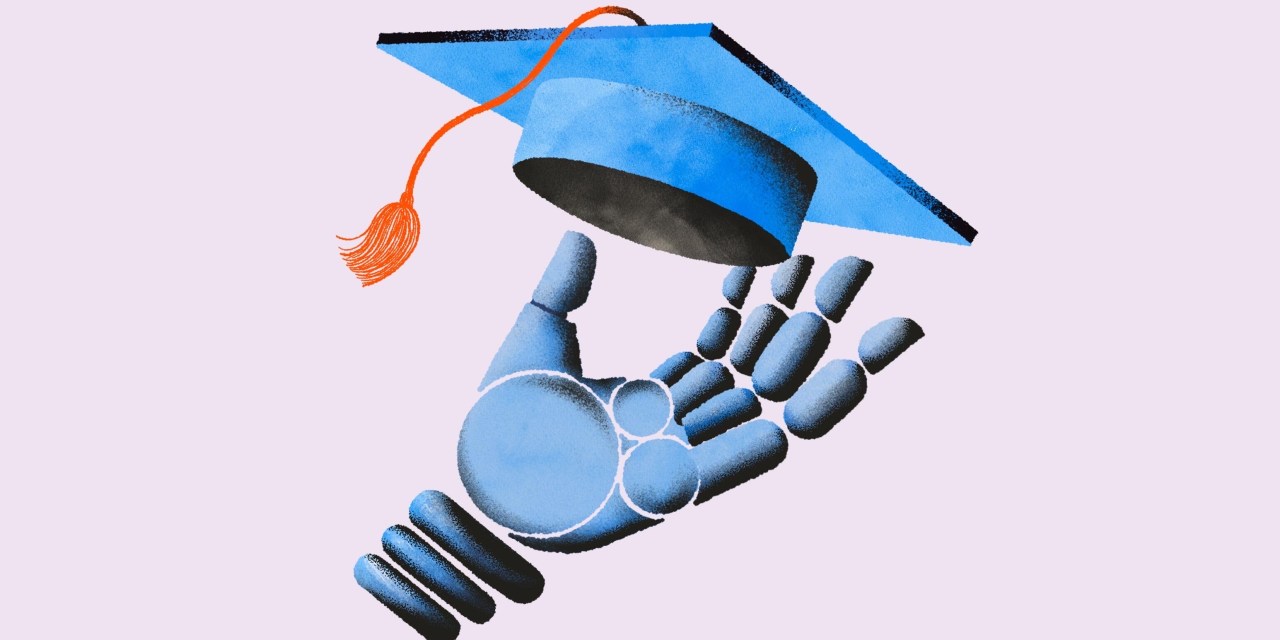How chief learning officers are upskilling employees with generative AI

How we learn and develop within organizations is getting a makeover, thanks to generative AI.
Figuring out exactly what that looks like, is the job of chief learning officers. And for now, much of the focus is on pinpointing what rapidly emerging skills are needed from employees, to keep companies competitive in today’s fast-paced environment.
That’s been a priority for Deloitte’s CLO Anthony Stephan, a nearly two-decade veteran of the firm, who has been in the role for a year.
“I recognize the pandemic created a lot of difficulty, a lot of hardship, and that people are still experiencing lingering effects of it,” said Stephan. “It was also a trigger for change, for transformation, and moving us in a direction from physical experiences to virtualizing over 5,000 offerings essentially overnight. But it was an awareness, an awakening that we can absolutely deliver value upskilling in virtual environments.”
At the core of that is tapping new technologies including generative AI, to ensure internal learning and development programs are geared toward upskilling people in the areas needed by businesses, in an accelerated timeframe, he stressed.
He believes this is “critically important,” especially in professional services to meet clients’ needs. And while tech upskilling used to be saved just for employees who might have been in the workforce for a long time, it’s now necessary for everyone immediately. Stephan has noticed they’ve had to pick up slack from universities that have been slower to adopt and teach new technology like AI.
“It’s becoming increasingly difficult for universities and academic institutions to keep up with this pace of change in upskilling people,” said Stephan. “People used to come from universities and be able to apply the skills immediately in the work environment. But now we’re realizing given a lot of the complexity and pace of change, we need to focus immediately upon arrival on upskilling people in the hottest tech skills – AI, Cloud, SEO.”
It’s one of the reasons why Deloitte announced last year Project 120, a $1.4 billion investment to enhance professional development experiences for Deloitte professionals.
Naturally, keeping tabs on the ROI of this upskilling is a priority also. For Stephan that means monitoring how the learning is later applied by employees, to generate outputs, will determine the program’s success, rather than how many people have completed a training course.
“We’re focused on creating learning that’s moving in the direction of desired outcomes, not 25,000 people through an AI Academy, but 25,000 people through an AI Academy that is deployed within 90 days,” said Stephan. “That expected outcome is where we are moving.”
Online course provider Coursera has a similar approach for both internal and external learners. “It’s all [the future of learning] about AI,” said Trena Minudri, Coursera’s CLO. When the Generative AI boom began in early 2023, the company quickly embedded a GPT into its OKRs, internal projects, learning sessions, and company-wide demos. The company even rebranded its annual “make-a-thon,” where the company brainstorms new programs and solutions, to an “AI-thon” last year. This year, it’s back to its regular name because everyone is incorporating AI on their own at this point.
“At first it’s adoption awareness, opening up people’s minds to GenAI and being willing to try it with the growth mindset,” said Minudri. “Now we can look at the application on the job and how it’s pushing our company forward.”
GenAI sits at the core of many of its initiatives, including having a chatbot “coach,” course builders, and translations. People even began asking last year if they could use their internal GPT during the annual performance review cycle for evaluations. This year, everyone was trained on how to use it and create a more non-biased review.
The result: People cut out upwards of three to five hours on the process. But what really stands out to Minudri is the anecdotal feedback, which is what drives more people to try AI for themselves.
“When you talk about the diffusion of innovation and really helping employees come on board, and getting people’s buy-in, the stories are more impactful than the data,” said Minudri. “Telling a story around a particular manager who used GPT in our playground to do the performance review and the value that brought to them, the way that they appreciated the data, how it was less biased, goes a lot further in pulling people into the fold, especially after you’ve moved beyond your early adopters.”


